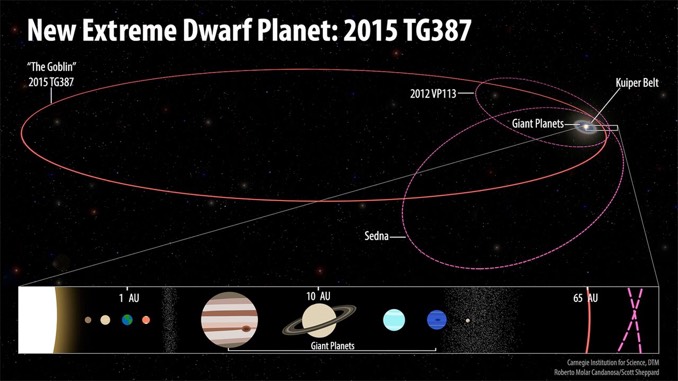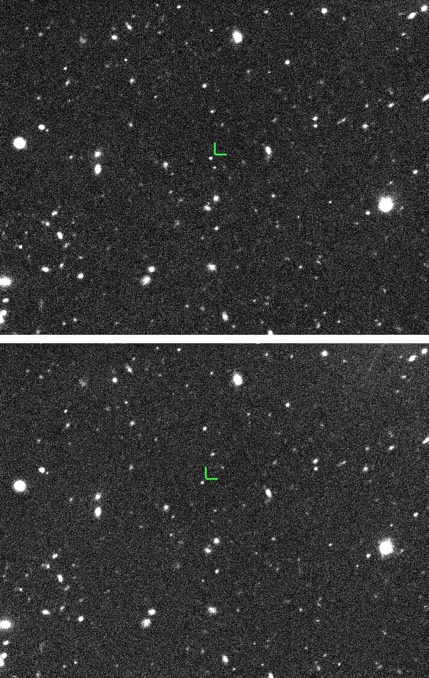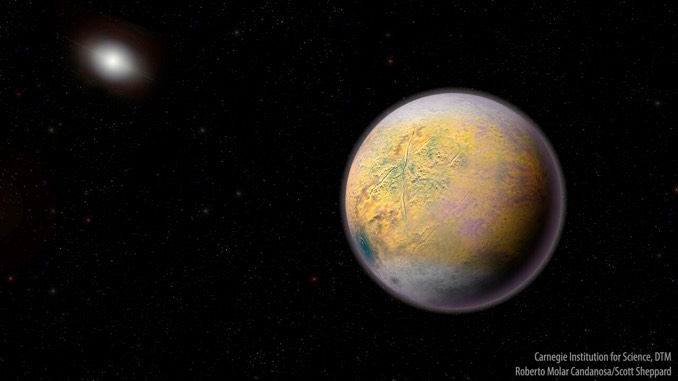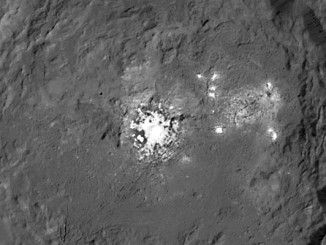
Astronomers searching the outer solar system for dwarf planets and the theorised but elusive Planet X far beyond Pluto have found an extremely remote body that never comes closer to the Sun than 65 astronomical units, or 9.7 billion kilometres (6 billion miles). The 40,000-year orbit is consistent with the presumed gravitational effects of the as-yet-unseen Planet X, a so-called super Earth thought to be lurking even farther away.
The newly discovered body, known as 2015 TG387, was discovered by Carnegie’s Scott Sheppard, Chad Trujillo of Northern Arizona University and David Tholen of the University of Hawaii. They first observed TG387 in 2015 using the Japanese Subaru 8-metre telescope in Hawaii. But it is so distant, so dim and moving so slowly it took additional observations over three years using Carnegie’s Las Campanas Observatory in Chile and the Discovery Channel Telescope in Arizona to pin down TG387’s orbit.

It was discovered at a distance of about 80 AU from the Sun, about two-and-a-half times farther out than Pluto’s present location. Only two other inner Oort Cloud objects – 2012 VP113 and Sedna – have more distant perihelia and no other known body travels as far from the Sun: 2,300 AU at its maximum distance. In that orbit, TG387 never comes close enough to Jupiter, Saturn, Uranus and Neptune to have any noticeable gravitational interactions.
“These so-called Inner Oort Cloud objects like 2015 TG387, 2012 VP113, and Sedna are isolated from most of the solar system’s known mass, which makes them immensely interesting,” Sheppard said. “They can be used as probes to understand what is happening at the edge of our solar system.”
Tholen said they believe “there could be thousands of small bodies like 2015 TG387 out on the solar system’s fringes, but their distance makes finding them very difficult. Currently we would only detect 2015 TG387 when it is near its closest approach to the Sun. For some 99 percent of its 40,000-year orbit, it would be too faint to see.”

Given the body is only 300 kilometres (186 miles) or so across, finding it at all was an impressive feat.
Sheppard and Trujillo earlier noticed similarities in the orbits of several extremely remote bodies that seemed to indicate the gravitational influence of a larger, unseen planet. Michael Brown and Konstantin Batygin at the California Institute of Technology concluded a super Earth likely was shaping the orbits in question. And TG387’s orbit fits that scenario.
“What makes this result really interesting is that Planet X seems to affect 2015 TG387 the same way as all the other extremely distant solar system objects,” Trujillo said of on-going computer analysis. “These simulations do not prove that there’s another massive planet in our solar system, but they are further evidence that something big could be out there.”



